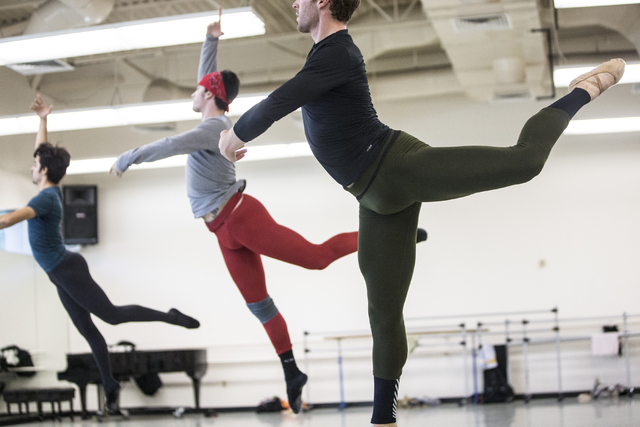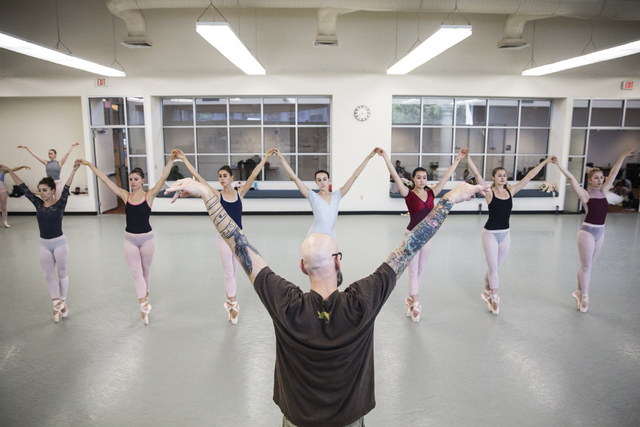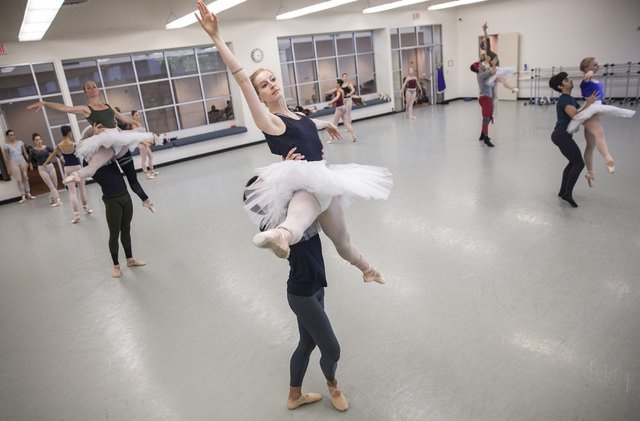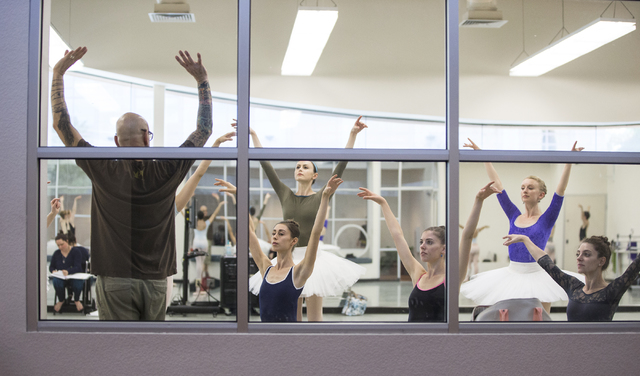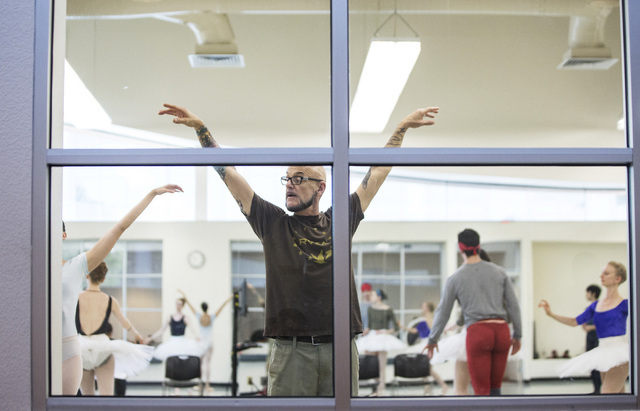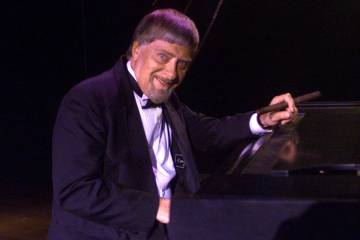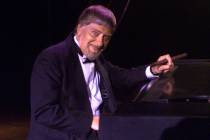Nevada Ballet Theatre celebrates Tchaikovsky, beginning with ‘Sleeping Beauty’
Greatest-hits shows are nothing new in Las Vegas. (Think Rod Stewart’s “The Hits.” Or Lionel Richie’s “All the Hits.”)
But greatest-hits shows aren’t confined to the Strip.
At The Smith Center, Nevada Ballet Theatre’s 45th season serves up a multiperformance salute to ballet’s greatest composer, Peter Ilych Tchaikovsky by name.
There’s the holiday staple “The Nutcracker,” of course, which returns to The Smith Center’s Reynolds Hall in December for 11 performances. (Including one on Christmas Eve.)
And in February, the ballet company will present “Swan Lake” — as staged by artistic coach Cynthia Gregory, who danced the dual role of Odette/Odile to such acclaim with American Ballet Theatre that the legendary Rudolf Nureyev proclaimed her “America’s prima ballerina assoluta.”
In her equally legendary career, Gregory also danced the title role of Aurora in “The Sleeping Beauty,” which opens Nevada Ballet Theatre’s season this weekend.
While nothing could top her “Swan Lake” triumph, Gregory’s “Sleeping Beauty” performance remains “one of my most challenging roles,” she says. (It’s preserved on DVD thanks to a 1979 PBS “Live From Lincoln Center” broadcast that captures, Gregory says, “the way I would like to remember my dancing.”)
As for “Sleeping Beauty” itself, “it’s a lovely piece for families because of the sweetness of the story,” Gregory observes.
But children won’t just be watching. They’ll be dancing alongside NBT artists.
“We’re really trying to broaden our base and be more appealing to the community,” notes Nevada Ballet Theatre artistic director James Canfield.
To that end, about 24 children will be part of the “Sleeping Beauty” company, including a dozen girls (all students at NBT’s academy) who’ll be performing a garland dance in the ballet’s second scene, “The Spell.”
By launching the season with “The Sleeping Beauty” and following up with the annual “Nutcracker,” the NBT schedule means “parents sort of have a launch pad” to introduce “Swan Lake,” Canfield suggests.
“It’s a great thread, just based on its historical value,” he says. “It’s the trifecta,” one that emerges as “a nice way to get kids introduced to the greatest ballets by the greatest composer.”
Besides, the kids — and their parents — know the story.
You know, the one about the vengeful fairy — who wasn’t on the invitation list for Princess Aurora’s grand christening celebration — who curses the baby princess, decreeing that Aurora will fatally prick her finger on a spindle on her 16th birthday. (Guest artist Jordan McHenry will dance the role of the evil Carabosse.)
Lucky for Aurora (danced by Kaori Fukui), the powerful Lilac Fairy (Krista Baker) is on hand to partially reverse the curse, which will only put Aurora to sleep for a hundred years — after which a kiss from handsome prince Desire (Morgan Stillman) will awaken the slumbering beauty.
Unlike some ballets, there’s a lot of pantomime throughout “Sleeping Beauty,” according to Canfield.
“It’s like going to a Shakespeare play” where, for the first few minutes, viewers must settle in and adjust to the Elizabethan-era language, he explains. “If you relax and let it flow into your ears, you get it.”
Similarly, NBT audiences will see the dancers’ gestures as part of the storytelling, Canfield adds.
“It has to be musical,” he says. “It has to tell the story that’s in the music.”
And, in Canfield’s opinion, the music represents Tchaikovsky at his best.
“This is my favorite score of the three” Tchaikovsky ballets the dance company will present this season, Canfield says. “It’s so complete” and “it tells the story so well.”
So do the dances, which are based on ones created by “Sleeping Beauty’s” original choreographer, Marius Petipa, ballet master of the Imperial Ballet in St. Petersburg, Russia, where the ballet debuted in 1890.
“Everyone uses the Petipa (version) as a template,” Canfield says. It’s gone through many renditions, all of which base it off the original ideas, which have been preserved through written notation and passing it down, dancer to dancer.
In every new “Sleeping Beauty,” however, you don’t have to get too far off track, he adds, stressing the importance of staying true to Petipa’s original version.
By now, what’s survived is “the perfect edit,” in Canfield’s view, presenting the ultimate pairing of music and movement.
“It’s had the time to go through all the tests, if you will,” he adds. “They got it right.”
The same can be said for the season’s other Tchaikovsky ballets, which are “the most widely known,” Canfield points out.
As for those who question the greatest-hits scheduling, Canfield has a quick response: “It’s like saying, is there too much Disney? They’re well-known, easy to understand — the great classics of all time.”
Read more from Carol Cling at reviewjournal.com. Contact her at ccling@reviewjournal.com and follow @CarolSCling on Twitter.
Preview
What: Nevada Ballet Theatre's "The Sleeping Beauty"
When: 7:30 p.m. Saturday, 2 p.m. Sunday
Where: Reynolds Hall, The Smith Center for the Performing Arts, 361 Symphony Park Ave.
Tickets: $29-$139 (702-749-2000, thesmithcenter.com, nevadaballet.org)
Nevada Ballet Theatre 2016-17 season
Nevada Ballet Theatre kicks off its 45th annual season with this weekend's "The Sleeping Beauty."
Other performances scheduled for this season (all at The Smith Center's Reynolds Hall unless otherwise noted):
Nov. 13, 19 and 20: "A Choreographers' Showcase" (collaboration with Cirque du Soleil at Mystere Theatre, Treasure Island)
Dec. 10-24: "The Nutcracker"
Feb. 25-26: "Swan Lake"
March 30-April 2: The Studio Series (NBT Studios, Summerlin), for season subscribers only
May 13-14: "Peter Pan"
Details on performances and tickets: nevadaballet.org




